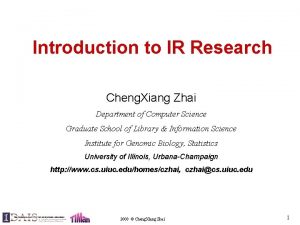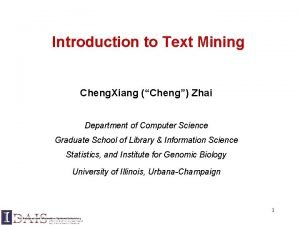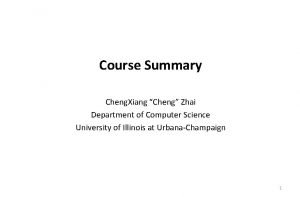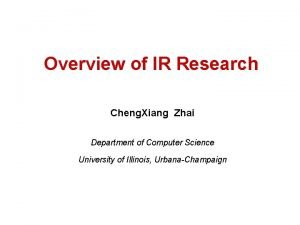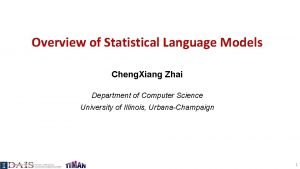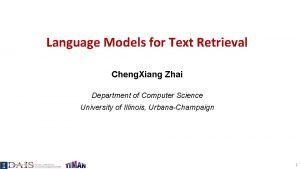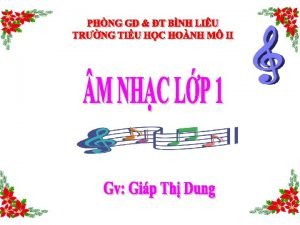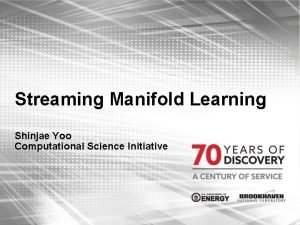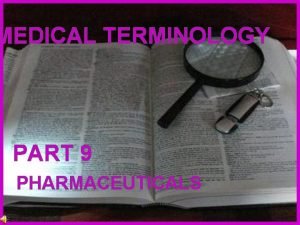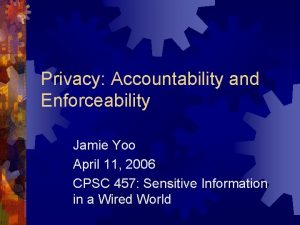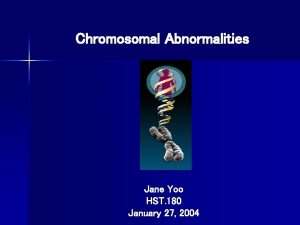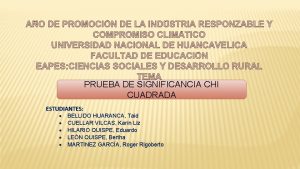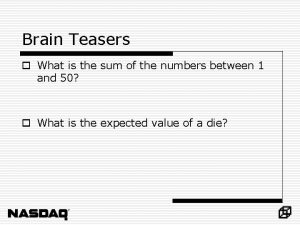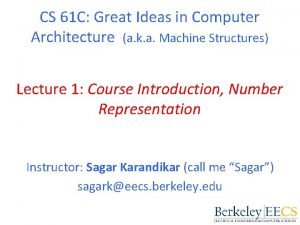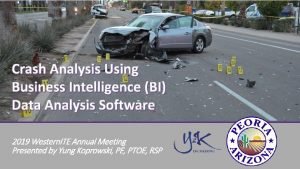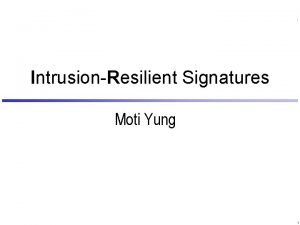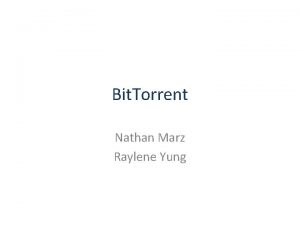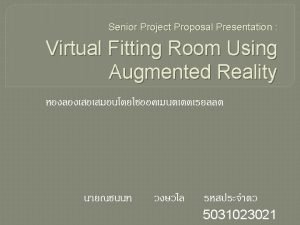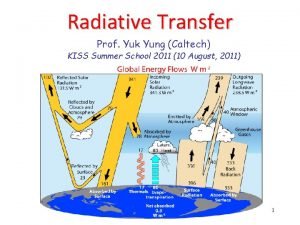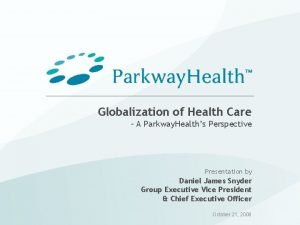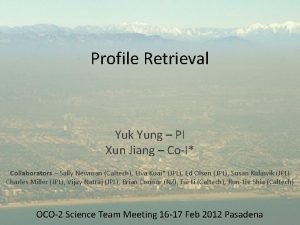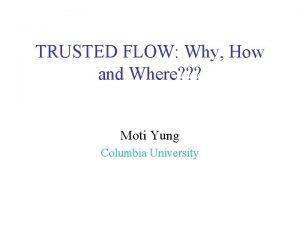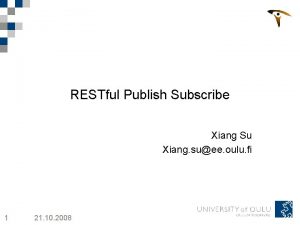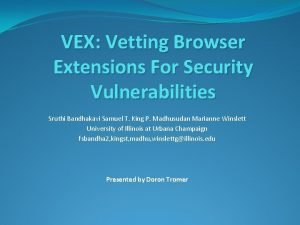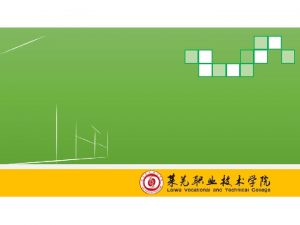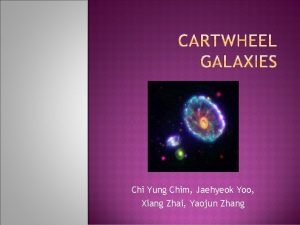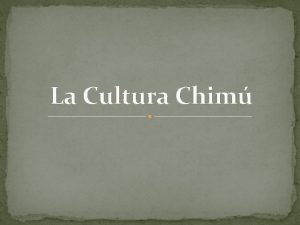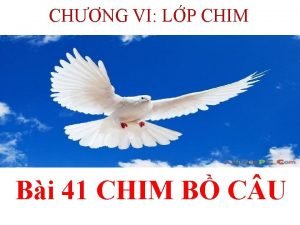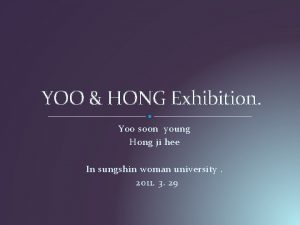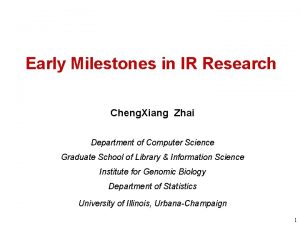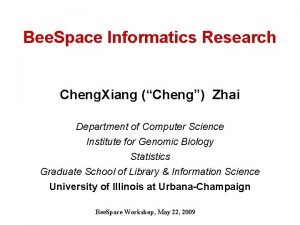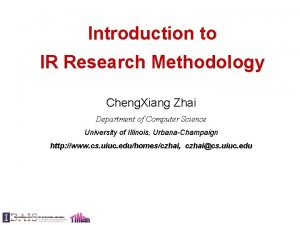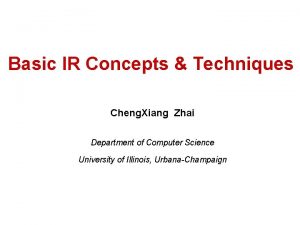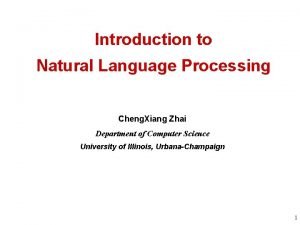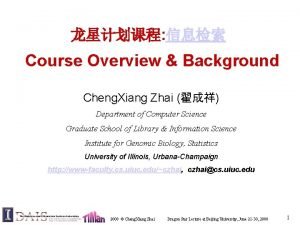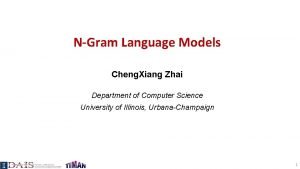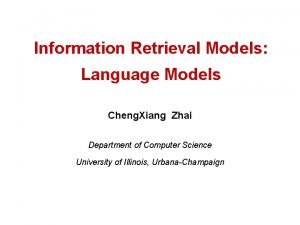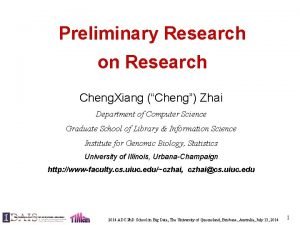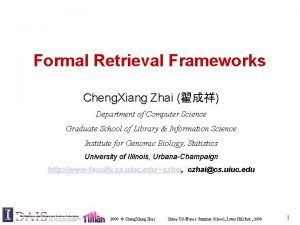Chi Yung Chim Jaehyeok Yoo Xiang Zhai Yaojun


































- Slides: 34

Chi Yung Chim, Jaehyeok Yoo, Xiang Zhai, Yaojun Zhang

System: a ring galaxy discovered in 1963 by Herzog More detailed feature discovered by Lynds in 1976: ring + nucleus Analysis of the spectrum reveals different velocities of ring and nucleus Material between the ring and nucleus → Linking between the two?


Then Lynds and Toomre proposed the Cartwheel model to explain the features. They proposed that the intruder gives a brief inward gravitational pull that changes a typical galaxy into a ring like structure. Simulation: only the nuclei attract significantly Our target: to revisit this simulation using Aarseth's Code.



We want a Gaussian distribution of areal density of the disk: To make the nuclei only the significant source of gravitation, we set mdisk: mnucleus=1: 99 Kepler velocity for the masses on disk:

Ways to add masses: Equal masses on the rings, with the ring separation determined by the density Equal ring separation, with masses determined by density Forget the rings and put equal masses throughout the whole space

• • Equal number of identical test masses on each ring Distribution of {r 1, r 2, …} follows the probability distribution:

• How to pick the radius: Let q = r/r 0, and g(q) = q Exp(-q 2/2) – We know g(q) < gmax= 0. 606531 – Repeat choosing two uniformly distributed random numbers 0<X 1<gmax and 0<X 2<∞ ≈ 100, until X 1 > g(X 2) – Then q = X 2 –

• Another convenient method: • Choose random numbers 0<Xi<1 Xi

All equal mass Normalized for Md to be 0. 01

Accumulated Gaussian dist. Equal ring mass Equal mass particles on a ring Normalized for Md to be 0. 01 Equal ring mass Equal separation particles on a ring


• We use the same probability of the number of masses, and put the number of test masses for each ring according to the probability.

• Put in masses randomly using r determined by the previous rule, and θ, φ determined by setting uniform random variables X 1=0. 5, 0 < X 2 <1

• • • Algorithm used: Aarseth Code η = 0. 2, ε = 0. 3 G = M = r 0 =1 Taken initial approach speed as if released from infinity We performed two kinds of collision: – – Point-intruder to galaxy Galaxy to galaxy











• Phenomenon: Ring-like structure • Simple Model Explanation: What’s the influence of the two big nuclei on ONE test particle ?

FORCE EXERTED BY THE INTRUDER

SOLVABLE PROBLEM • Change in velocity: • Trajectory of the test particle:

TRAJECTORY AND TIME DEPENDENCE


• • We refered to: Lynds, Roger and Toomre, Alar. On the Interpretation of Ring Galaxy. The Astrophysical Journal, 209: 382 - 388, 1976. Toomre, Alar and Toomre, Juri. Galactic Bridges and Tails. The Astrophysical Journal, 178: 623 666, 1972.

 Cheng xiang zhai
Cheng xiang zhai Chengxiang zhai
Chengxiang zhai Cheng zhai
Cheng zhai Cheng xiang zhai
Cheng xiang zhai Cheng xiang zhai
Cheng xiang zhai Cheng xiang zhai
Cheng xiang zhai E e e qu xiang xiang tian ge
E e e qu xiang xiang tian ge Chim đậu trên cành chim hót líu lo
Chim đậu trên cành chim hót líu lo Shinai yoo
Shinai yoo Scmds
Scmds An-tih-koh-ag-yoo-lant
An-tih-koh-ag-yoo-lant Jamie yoo
Jamie yoo Dr jane yoo
Dr jane yoo đổi địa chỉ logic sang địa chỉ vật lý
đổi địa chỉ logic sang địa chỉ vật lý Chi domanda lavoro
Chi domanda lavoro Chi chi nnn
Chi chi nnn Chi chi tg tf
Chi chi tg tf Seth zhai
Seth zhai Molly zhai
Molly zhai Crash data analysis software
Crash data analysis software Moti yung
Moti yung Deformatsiya mustaqil ish
Deformatsiya mustaqil ish Raylene torrent
Raylene torrent Huei-yung lin
Huei-yung lin Kuchlanish va deformatsiya
Kuchlanish va deformatsiya Yuk yung caltech
Yuk yung caltech Vclassdojo
Vclassdojo Richard seow yung liang
Richard seow yung liang Dr yung chen
Dr yung chen Moti yung
Moti yung Miscosoft forms
Miscosoft forms Vex xiang
Vex xiang Vex xiang
Vex xiang Liu xiang
Liu xiang Record producer job description
Record producer job description
